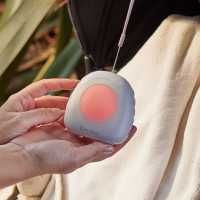Does green mucus mean you’re infectious and need antibiotics? Not necessarily. Antibiotics provide no benefit for the common cold and other respiratory illnesses caused by viruses.
When you have a cold or other respiratory illness, you might see a range of different colours of mucus or snot when you blow your nose. We’re often told – even by doctors – that green or yellow secretions indicate you’re infectious. But this isn’t true.
It’s unclear how this myth arose, but it’s likely a misunderstanding of the appearance and colour of pus.
Pus usually signals the arrival of harmful bacteria to a site, such as golden staph into a hair follicle resulting in a boil. But in the case of respiratory infections, the green or yellow colour is due to the white blood cells.
During a viral infection, the lining of the respiratory cells is damaged, which initially provokes the excess production of mucus. This is followed by the arrival of white blood cells, which clean up the cellular debris.
The common cold
The common cold, or acute rhinosinusitis, is the most common cause of respiratory infection and is always caused by viruses, particularly one called rhinovirus.
In a typical case, this infection starts with irritation in the nasal passages. It rapidly progresses to the production of excessive mucus and “runny nose”. Over a number of days, the mucus becomes thicker and turns to yellow or green as the neutrophils – cells that help fight infection – arrive.
This yellow or green colour is a natural part of the inflammatory sequence. It means that the immune system is fully functional and the cold is subsiding – not that bacteria have taken over.
Contrary to popular belief, the most contagious phase of the infection is early in the “runny nose” phase, not later when the secretions become coloured. When the secretions do become coloured, only a small number of viruses are present and the possibility of spreading the infection is low.
Antibiotics work on bacterial infections only and therefore don’t help fight the common cold.
Sinusitis
Many people confuse the arrival of green mucus in nasal secretions with sinusitis. However, sinusitis strictly applies to the respiratory sinuses which, while communicating with the nasal passages (via openings called ostia), are anatomically different from them.
In acute rhinosinusitis, the lining of the nasal passages and the sinuses are all infected with the virus and produce excessive mucus. But unless the communications between the sinuses and the nasal passages become blocked, sinusitis has not occurred.
True sinusitis results from a blockage of the ostia, which traps harmful bacteria in the sinus(es). It’s an uncommon complication of acute rhinosinusitis and occurs many days into a cold. As well as a prolonged cold, symptoms include fever, pain and tenderness over the sinuses.
Because acute rhinosinusitis is strictly viral, antibiotics have no benefit, even when the mucus is green.
However, true acute sinusitis does warrant antibiotic treatment. Such treatment should be considered only in someone with acute rhinosinusitis if symptoms have been present for at least seven days. This may be where some confusion arises about antibiotic treatment for prolonged colds.
Acute bronchitis
Another condition frequently associated with green mucus is acute bronchitis. This is almost always caused by viruses.
The sequence of events in the inflammatory process of acute bronchitis is identical to that of acute rhinosinusitis. Acute bronchitis and acute rhinosinusitis can even occur together or in sequence from the same viral infection.
The first symptom of acute bronchitis is cough. As excessive mucus is produced, the cough will become productive and sputum (“spit”) will be clear or “white” in colour.
Over a small number of days, the white blood cells arrive as a natural part of the inflammatory process and change the colour to yellow or green.
Antibiotics provide no benefit for acute bronchitis in an otherwise healthy person, even when sputum is green.
![]() The situation is different for someone with prior damage to the lungs or airways, such as chronic obstructive lung disease. These people are more likely to have bacterial infection when the sputum becomes green and to suffer further damage. Antibiotics are recommended in those circumstances.
The situation is different for someone with prior damage to the lungs or airways, such as chronic obstructive lung disease. These people are more likely to have bacterial infection when the sputum becomes green and to suffer further damage. Antibiotics are recommended in those circumstances.
John Turnidge, Affiliate Professor of Molecular and Biomedical Science, University of Adelaide
This article was originally published on The Conversation. Read the original article.
We may get commissions for purchases made using links in this post. Learn more.




















-

-
-
-
meedee said
- 09 Oct 2022
Reply
-

-
-
-
Blossom said
- 03 Sep 2018
Reply
-

-
-
-
tessie said
- 20 Aug 2018
Reply
-

-
-
-
mom101628 said
- 03 Aug 2018
Reply
-

-
-
-
rovermum said
- 02 Aug 2018
Reply
-

-
-
-
mom114371 said
- 01 Aug 2018
Reply
-

-
-
-
mom111059 said
- 01 Aug 2018
Reply
-

-
-
-
rachel1970 said
- 01 Aug 2018
Reply
-

-
-
-
Ellen said
- 01 Aug 2018

Reply
-

-
-
-
mom68673 said
- 31 Jul 2018
Reply
-

-
-
-
mom265671 said
- 31 Jul 2018
Reply
-

-
-
-
ashna9 said
- 31 Jul 2018
Reply
Post a comment10:13 am
8:56 am
2:45 am
9:44 pm
9:28 am
6:34 pm
8:29 am
6:39 am
4:00 am
11:37 pm
11:36 pm
9:18 pm